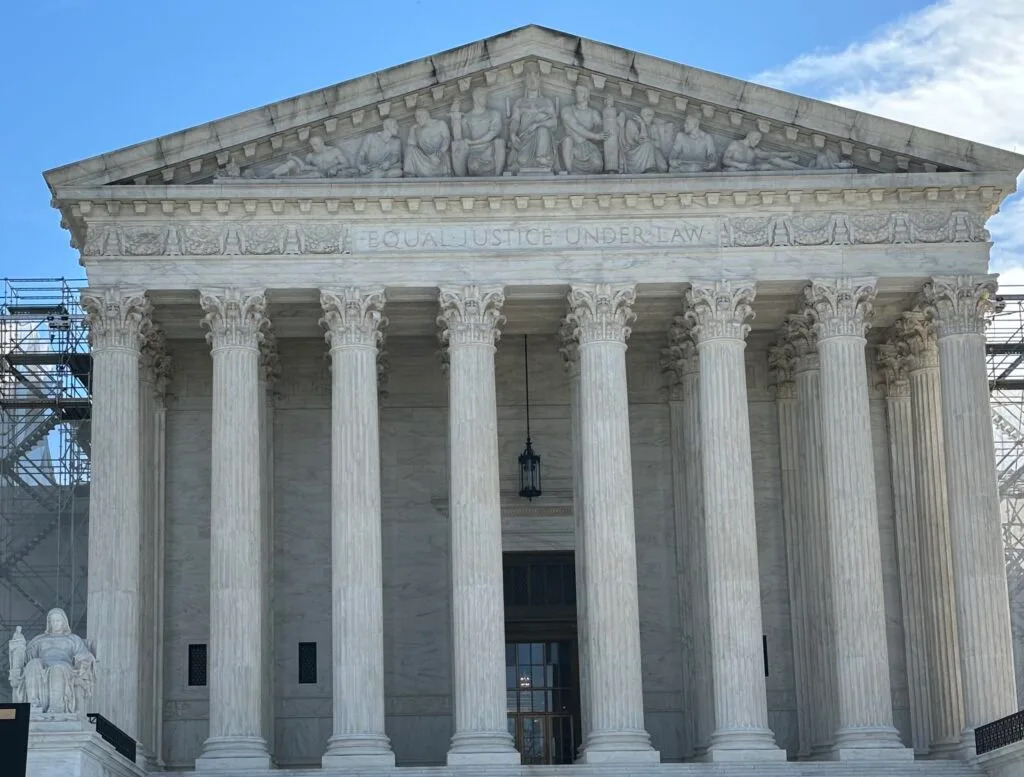
The U.S. Supreme Court. (Jane Norman/States Newsroom)
Wednesday marked the 60th anniversary of the Voting Rights Act being signed into law. Last week, the U.S. Supreme Court started a timer on what some fear could be the demise of key provisions of the landmark civil rights legislation.
Justices signaled last week they intend to consider whether a state violates the U.S. Constitution when it seeks to remedy a violation of the Voting Rights Act by taking race into account during the redistricting process.
The court issued an order Friday to parties in Louisiana v. Callais, a lawsuit that non-Black voters filed against the state over the creation of a second majority Black district for the state in the U.S. House of Representatives. They are being asked to explain whether the state’s intentional creation of a second majority-minority congressional district violates the 14th or 15th amendments to the U.S. Constitution.
“It’s an ominous question,” said Michael Li, senior counsel for the Brennan Center for Justice, a progressive organization that follows redistricting issues throughout the country.
The 14th and 15th amendments gave formerly enslaved people the right to vote and prohibit any discrimination that keeps a person from voting. The Voting Rights Act, which was approved in 1965, bolsters the protections granted in those amendments.
At question in the Callais case is Section 2 of the Voting Rights Act, which prohibits voting laws or procedures that purposefully discriminate on the basis of race, color or membership in a language minority group.
Bringing the Voting Rights Act into question makes the case among the most important the court will rule on in its upcoming term. The decision could have nationwide implications, as it could set the standard for the degree to which race can be considered when drawing election maps after each decennial census.
A decision on Callais — and on Section 2 of the Voting Rights Act — will not come until next spring. The process that put the case before conservative-majority court started years ago.
SUBSCRIBE: GET THE MORNING HEADLINES DELIVERED TO YOUR INBOX
FEBRUARY 2022: During an 18-day special session on redistricting, Louisiana lawmakers passed laws that redrew the borders of Louisiana’s six U.S. House seats and its legislative districts.
The Louisiana Legislative Black Caucus advocated for maps that increased the number of majority Black districts.
“One-third of six is two” became the rallying cry of Black lawmakers, who believed that since Black people made up nearly a third of the state’s population, they should be represented by one-third of Louisiana’s congressional districts.
Republicans, who held the majority in the legislature, declined to increase Black representation, opening themselves up to litigation.
MARCH 9, 2022 – Louisiana Gov. John Bel Edwards, a Democrat, vetoed the congressional map Republicans supported. He said the boundaries, which kept just one district majority Black, violated the Voting Rights Act.
MARCH 30, 2022 – Lawmakers convened a one-day special session to override Edwards’ veto.
Hours later, the NAACP Legal Defense Fund and Black Louisiana voters filed a lawsuit, Robinson v. Ardoin, challenging the map, claiming it violated federal law.
JUNE 6, 2022 – U.S. District Judge Shelly Dick sided with the Black Robinson plaintiffs, ruling the map an unconstitutional racial gerrymander. Dick was appointed to the bench by President Barack Obama in 2012. Her ruling required the legislature to draw a new map with two majority Black districts that could be used in the 2022 congressional midterm election while litigation continued.
JUNE 2022 – The Louisiana Legislature met for another special session to create a map to comply with the judge’s guidance. In defiance of the federal court order, lawmakers adjourned without approving new congressional districts.
Several days later, the U.S. Supreme Court granted Louisiana’s request to block Dick’s ruling, pending the outcome of a similar redistricting case from Alabama, Allen v. Milligan. The court’s order meant the map Republicans passed in February would remain in place for the 2022 congressional midterms, despite a lower court ruling that it violated the Voting Rights Act and was racially discriminatory.
JUNE 8, 2023 – On the final day of Louisiana’s 2023 legislative session, the U.S. Supreme Court handed down a ruling in Allen v. Milligan. Conservative Chief Justice John Roberts and Justice Brett Kavanaugh joined the court’s three liberal members in an opinion that Alabama’s map violated Section 2 of the Voting Rights Act.
The court’s decision put a charge into the Louisiana Legislative Black Caucus and Black voters, as Louisiana’s case was mathematically stronger than Alabama’s. Alabama has seven districts and a 26.8% Black population, while Louisiana has six districts and a 32.8% Black population.
“I’m ecstatic,” Sen. Royce Duplessis, D-New Orleans, said with a grin after learning of the news.
FALL 2023 – Republican U.S. House Speaker Kevin McCarthy was forced out of his position, setting up a power struggle for his replacement. House Majority Whip Steve Scalise of Jefferson was viewed as the natural successor, but a key McCarthy ally, U.S. Rep. Garret Graves of Baton Rouge, had other ideas. His role in the speaker drama was widely viewed as costing Scalise the speaker position, which ultimately went to U.S. Rep. Mike Johnson, R-Shreveport. Graves’ stance cost him support among Republicans in Washington, D.C., and back home.
At the same time, Graves bet on the wrong horse in the gubernatorial election, spurning the shoo-in winner, Attorney General Jeff Landry, for his college buddy, Stephen Waguespack, a business lobbyist. It put Graves at odds with an incoming governor who would exert more power than any other had in decades.
NOV. 11, 2023 – The conservative U.S. 5th Circuit Court of Appeals affirmed the Louisiana Legislature violated the Voting Rights Act with its congressional map and set a Jan. 15, 2024, deadline for drawing a new version.
That deadline was tricky, as both the legislative leaders who fought for the map and the Democratic governor who vetoed it were weeks from leaving office. None had any desire to do the tedious work of redistricting in their final days in office.
Landry wouldn’t take office until Jan. 8, and the state constitution requires seven days lead time before a special session can convene. Lawmakers didn’t have enough time to pass a map before the deadline.
JAN. 15-19, 2024 – With a deadline extension from the federal court in hand, Gov. Jeff Landry convened the legislature for a special session. In just a week, lawmakers rammed through a new congressional map with two majority Black districts.
The session brought together a set of strange bedfellows: Black Democrats, who wanted more minority representation; and white Republicans, who used the opportunity to unseat Graves, who was short on allies and long on enemies.
To unseat Graves in the 6th Congressional District, Republicans had to draw a map that complied with fewer traditional redistricting principles than the one Black voters preferred. The Republican-crafted 6th District lines run from Shreveport to Baton Rouge, slashing down the center of the state and veering to pick up clusters of Black voters along the way.
JAN. 30, 2024 – White voters filed the Callais lawsuit claiming the map was drawn solely based on race and discriminated against them.
APRIL 2024 – An appellate panel of three federal judges found the new district lines were illegal, though the map was allowed to be used for the 2024 election.
NOV. 4, 2024 – The U.S. Supreme Court agreed to take up an appeal from Black voters in the Callais lawsuit.
NOV. 5, 2024 – For the first time in decades, Black voters in Louisiana got the opportunity to elect two members of the state’s congressional delegation. U.S. Rep. Cleo Fields was elected to a third term in Congress. He previously represented the 4th Congressional District until 1997, when a federal court ruled its boundaries were an unconstitutional racial gerrymander.
JUNE 2025 – In a rare move, U.S. Supreme Court punted a ruling on Callais, instead scheduling it for further arguments. At the time, justices did not say what new question it would raise.
Last week, the court made its question known, and the answer could reverberate across the country.
Li said the question posed by the court is so ominous because justices have questioned over the years whether there is a time limit to race-conscious redistricting practices. At the same time, he said, the court’s question is befuddling because time limits to Section Two are actually built into the Gingles Test.
Created by the U.S. Supreme Court in the 1986 case Thornburg v. Gingles, plaintiffs must show the existence of three preconditions to prove redistricting dilutes minority voting strength:
The racial or language minority group “sufficiently large and geographically compact to constitute a majority in a single-member district”
The minority group is politically cohesive
The majority votes sufficiently as a block to usually defeat the minority’s candidate of choice
“Section Two, by itself, automatically sunsets as conditions on the ground get better,” Li explained, referring to minorities’ access to equal voting opportunities.
The question is also troubling, experts say, because if the court’s ruling expands beyond Louisiana, it could be a further whittling down of the key civil rights legislation that has already been narrowed in recent years.
Civil rights proponents say that if the Supreme Court takes an ax to the Voting Rights Act with its ruling in the Callais case, it would be a reversal of its recent decisions.
John Bisognano, president of the National Redistricting Foundation, a voting rights organization, said courts have never ruled there is a conflict between the U.S. Constitution and Section 2 of the Voting Rights Act. The Supreme Court upheld Section 2 in its decision on Allen v. Milligan, the Alabama case that required a second majority-Black congressional district in the state.
“To comply with that law, Louisiana must have a congressional map that includes two Black opportunity districts,” Bisognano said in a statement. “If the Court decides to now undo that precedent, it would be a head-spinning reversal of itself.”
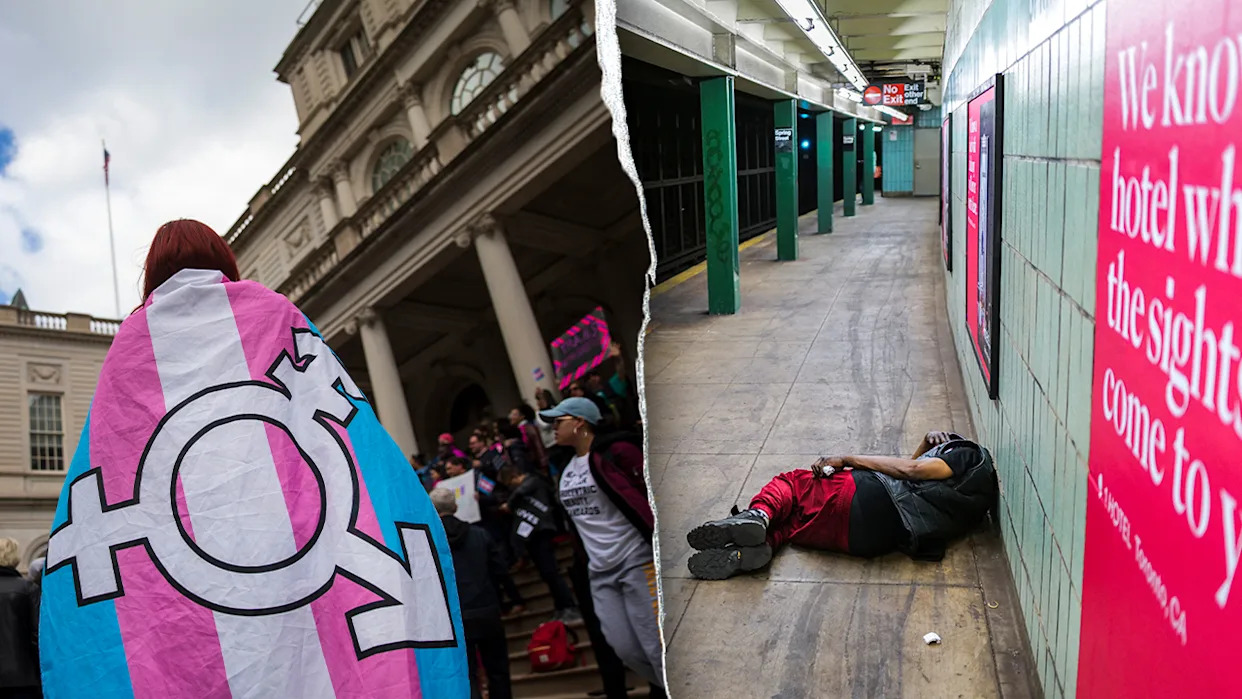


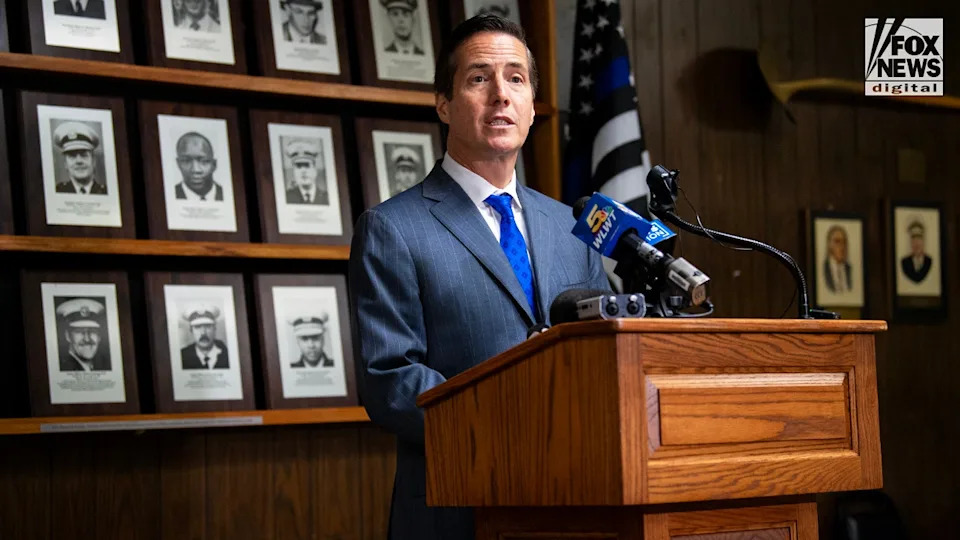
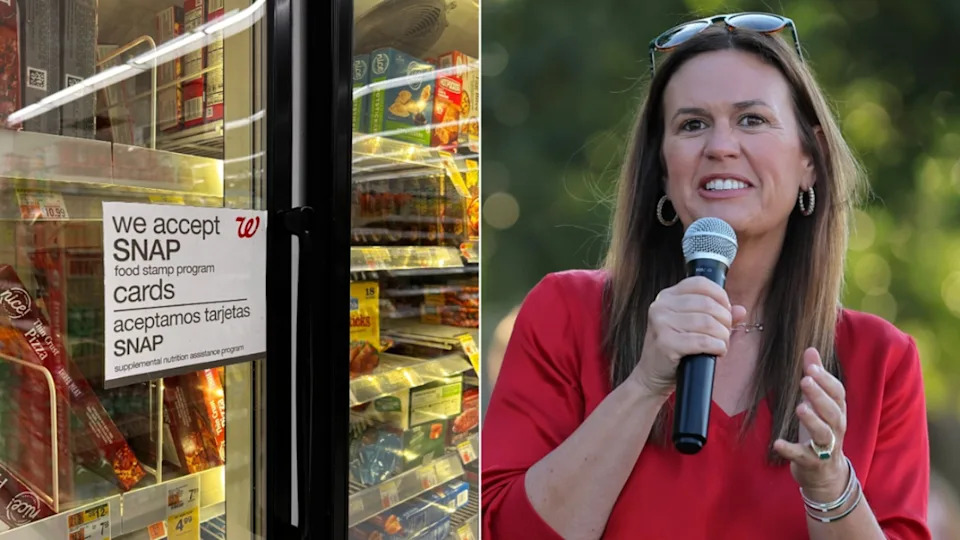

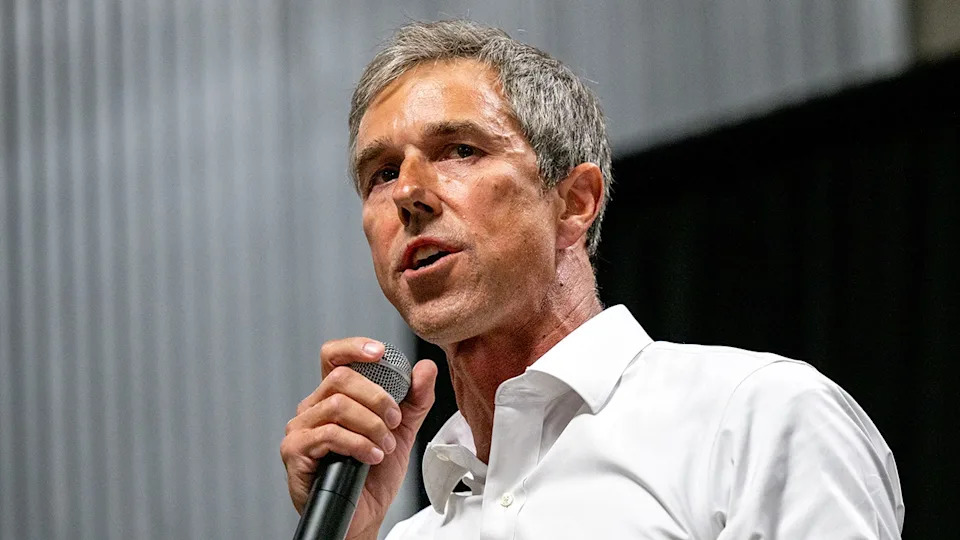
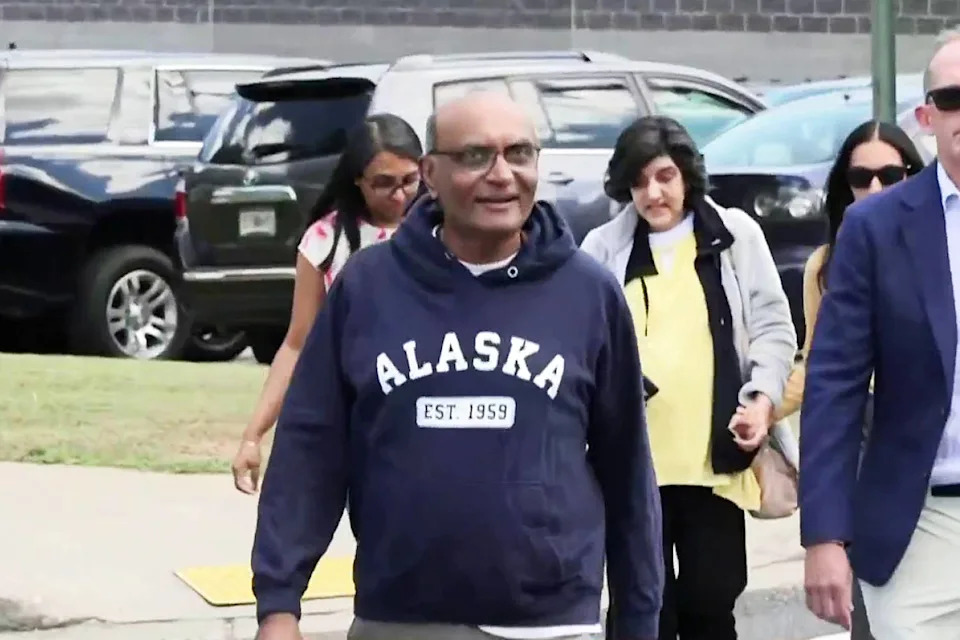
Comments